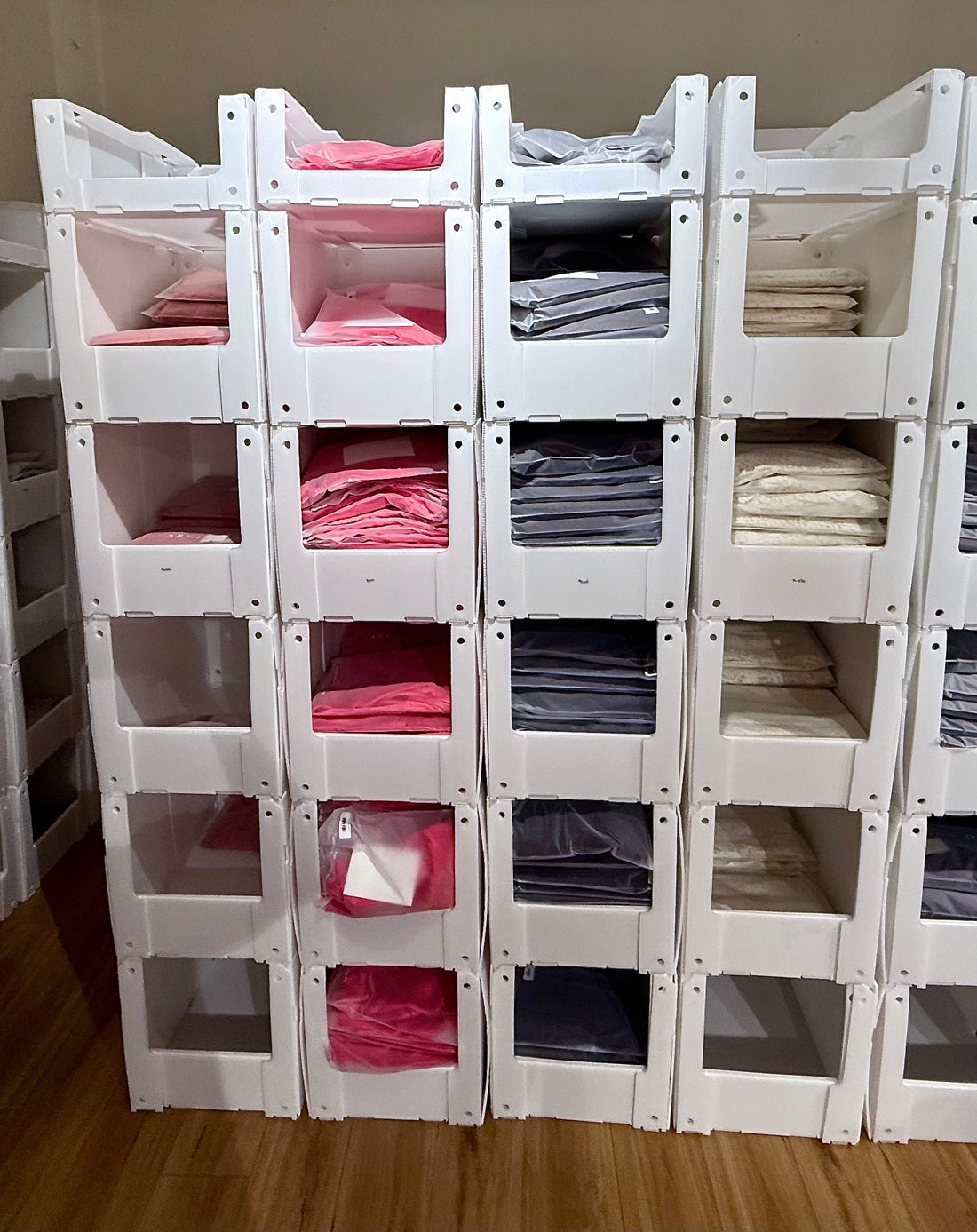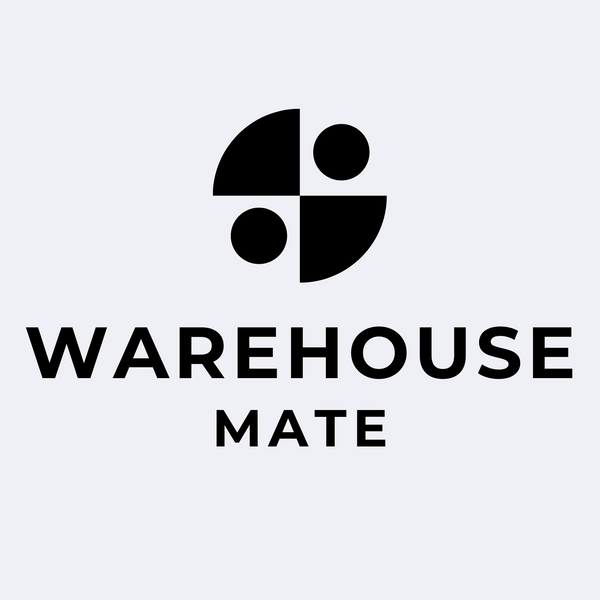
Stackable vs Nestable Bins: What’s Better for Your Warehouse Workflow?
Share
In a high-speed warehouse setting, efficiency is paramount. From getting the most out of storage space to optimizing order-picking velocity, every choice matters, even as basic as selecting the proper type of bin. Though it might not seem significant, the difference between stackable and nestable bins can have a large impact on workflow, utilization of space, and the cost over time.
Let's go deep into the pros, cons, and optimal use cases for each, and find out how to make the right decision for your business.
Why Bin Choice Matters in Modern Warehousing
An organization system in a warehouse dictates the speed at which orders flow, the security at which goods are warehoused, and the productivity with which employees work. Dumbly selected bins can result in lost floor space, harmed products, and increased handling expenses.
Selecting an optimal storage solution isn't only about cost, it's about functionality. In Australia's varied logistics and industrial environments, the presence of humidity, dust, and longer shipping distances means ruggedness, maximizing space, and reusability are key.
That's where long-lasting, recyclable alternatives such as Corrugated Stackable Bins and Plastic Stackable Pick Boxes come into play. Their heavy-duty construction enables you to create vertical storage systems while maintaining smooth, safe access and handling.
Stackable Bins: Strength, Stability, and Smart Vertical Storage
What Are Stackable Bins?
Stackable containers are made to securely sit atop each other without displacing the bin's content below. This reinforced or interlocking design makes them best suited for high-density, stable storage configurations.
These containers, such as Plastic Stackable Pick Bins and Stackable Storage Containers — are made with durable materials such as corrugated polypropylene or high-density plastic. The design structure prevents bins, when loaded, from buckling or collapsing under pressure.
Advantages of Stackable Bins
-
Optimize Vertical Storage: Stack bins to take maximum use of the rack or shelf height.
-
Stable and Secure: Perfect for storing heavy or delicate items without any risk of falling over.
-
Compatible with Automation: Intersects perfectly with conveyors, racking solutions, and pick-to-light systems.
-
Long-Term Durability: Corrugated plastic and reinforced edges allow them to be reused for years.
-
Reduced Product Damage: Stronger bases and stable stacking minimize shifting when moved.
Limitations
-
Share the same footprint when not in use — no nesting advantage.
-
Marginally more expensive due to increased material strength.
-
Overstacking will stress lower containers if outside of load limits.
Best Use Cases
Stackable containers are ideal for:
-
Elevated-volume e-commerce or manufacturing environments.
-
Facilities where bins are more likely to be filled than empty.
-
Warehouses with fixed racking systems emphasizing vertical efficiency.
Warehouse Mate, one of Australia's premier providers of storage solutions, provides a variety of Corrugated Stackable Bins purpose-built for the task, light, tough, and easy to move, they're made for extended warehouse use.
Nestable Bins: Space-Saving and Cost-Effective
What Are Nestable Bins?
Nestable bins are such that they "nest" or one goes into another when they are empty, which minimizes their total height. This configuration significantly reduces storage and return freight space.
Advantages of Nestable Bins
-
Potential space savings of up to 80% when empty.
-
Cut Return Freight Expenditures: Less pallets or truckloads needed for empty transportation.
-
Seasonal Storage Friendly: Best suited for seasonal inventory cycles.
-
Lighter and Easily Transported: Thinner walls and lighter-weight plastic material are often used.
Limitations
-
Not suitable for full stacking.
-
Less stability with heavy loads.
-
Better suited for light to mid-duty usage.
Best Use Cases
-
Reverse logistics and 3PLs dealing with regular returns.
-
Warehouses with varying levels of stock.
-
Locations where storage space is in short supply during slack periods.
Nestable bins perform beautifully when empty-space management is paramount, consider fulfillment centers shipping lots of empty bins back each day.
Hybrid (Stack-and-Nest) Bins: The Best of Both Worlds
Hybrid designs achieve the best of both worlds by combining the stacking and nesting features; bins stack when full but nest when empty. They employ tapered sides and strengthened edges that interlock for stability.
Pros:
-
Great balance of stackability and nestability.
-
Ideal for operations involving heavy rotation of full and empty bins.
Cons:
-
Moderately higher initial cost because of design complexity.
-
May not be as heavy-duty a load capacity as fully stackable bins.
These are an intelligent middle-ground solution for warehouses that desire flexibility and efficiency.
Key Considerations When Choosing Between Stackable and Nestable Bins
When considering Stackable Picking Bins or nestable designs, take the following key considerations into account:
-
Warehouse Space: Take rack and aisle measurements to determine if stacking will achieve the most utilization.
-
Product Weight & Fragility: Heavy or fragile products require firm stacking support.
-
Inventory Flow: If bins are frequently being returned empty, nestables conserve more space and capital.
-
Handling & Automation: For mechanized pick-up or conveyor systems, consistent bin geometry is essential.
-
Durability & Maintenance: Corrugated polypropylene bins provide longer life than cardboard or light plastic.
-
Environmental Impact: Corrugated plastics are sustainable, reusable, and recyclable.
In essence:
-
Select stackable when maximum vertical usage and bin stability are desired.
-
Select nestable when return transportation space savings or off-peak seasons are important.
-
Select a hybrid when both are of similar importance.
Case Study: Stackable Corrugated Pick Bins in Action
Australian warehouses are increasingly adopting Plastic Stackable Pick Boxes for effectiveness and reliability. A typical configuration employs bins of dimensions approximately 600 × 400 × 200 mm, constructed of 4–5 mm corrugated polypropylene.
These bins can:
-
Stack up to six tiers high.
-
Support loads up to 15 kg per bin (depending on design).
-
Ship flat for low-cost transportation and storage.
-
Withstand moisture, dust, and chemical damage.
In actual trials, a shift from cardboard to Corrugated Stackable Bins lowered product damage by more than 30% and conserved approximately 25% of storage space through improved vertical utilization.
A second major benefit? Quick pick rates. Because these bins have consistent geometry, they seamlessly integrate with automation systems in the warehouse and manual picking stations.
Stackable vs Nestable: Quick Comparison
| Feature | Stackable Bins | Nestable Bins | Hybrid (Stack-and-Nest) |
| Space Efficiency (Empty) | Low | Excellent | High |
| Stability (Full) | Excellent | Moderate | Good |
| Load Capacity | High | Moderate | Moderate |
| Return Freight Cost | High | Low | Medium |
| Ideal Use | High-volume, full bins | Frequent empty returns | Balanced workflows |
Tips for Implementation
Test both systems in one zone before investing in a system:
-
Monitor pick speed, storage density, and handle time.
-
Compare the number of empty bins that are filled up and how much space they take up.
-
Assess bin wear after a few weeks of usage.
-
Train employees to stack carefully and not overload.
-
Label the bins distinctly for easy identification and rotation.
Simple pilots like these tend to uncover hidden expenses and determine which system best suits.
The Bottom Line
Your best option is determined by the way your warehouse functions:
-
If your bins are perpetually full and stacking stability is important to you, choose Corrugated Stackable Bins or Plastic Stackable Pick Boxes.
-
If your operation entails lots of empty returns, nestable bins will save you more space and shipping expense.
-
And if you need flexibility, hybrid bins offer a good compromise.
Warehouse Mate assists Australian companies in optimizing their storage systems using premium, long-lasting Stackable Picking Bins of corrugated polypropylene. They're lightweight, simple to assemble, and constructed to withstand the pressures of today's warehouse environments.
Ready to Improve Your Warehouse Efficiency?
Selecting the correct bin is not merely a matter of organization; it's about maximizing your whole process. From upgrading storage to increasing capacity, the correct bin selection can reap quantifiable benefits for space, time, and cost savings.
Contact Warehouse Mate today for a free consultation and find out how the correct bin system can revolutionize your warehouse productivity.
